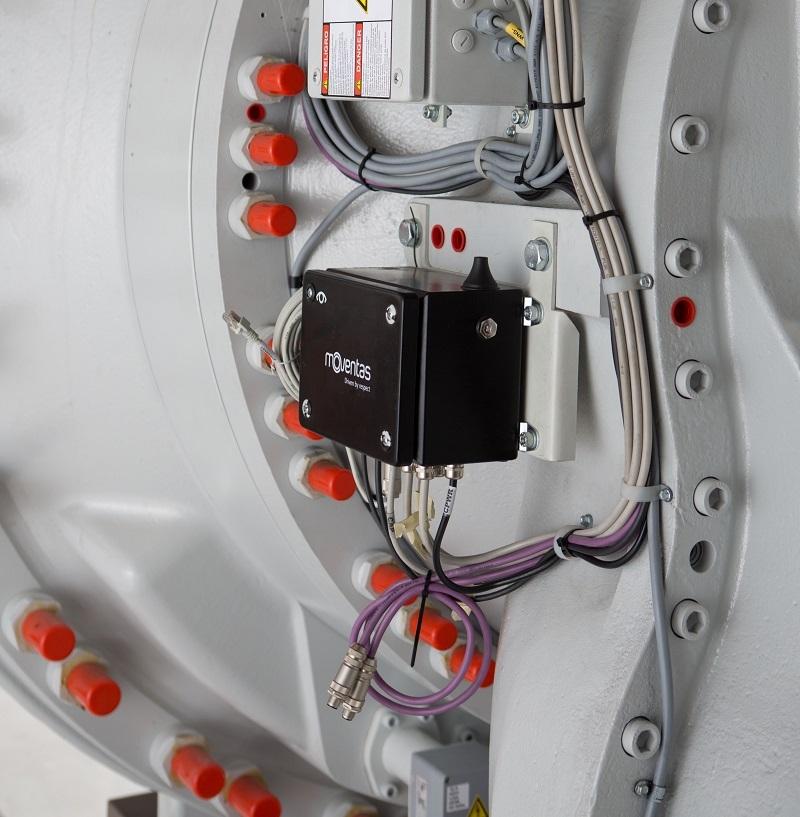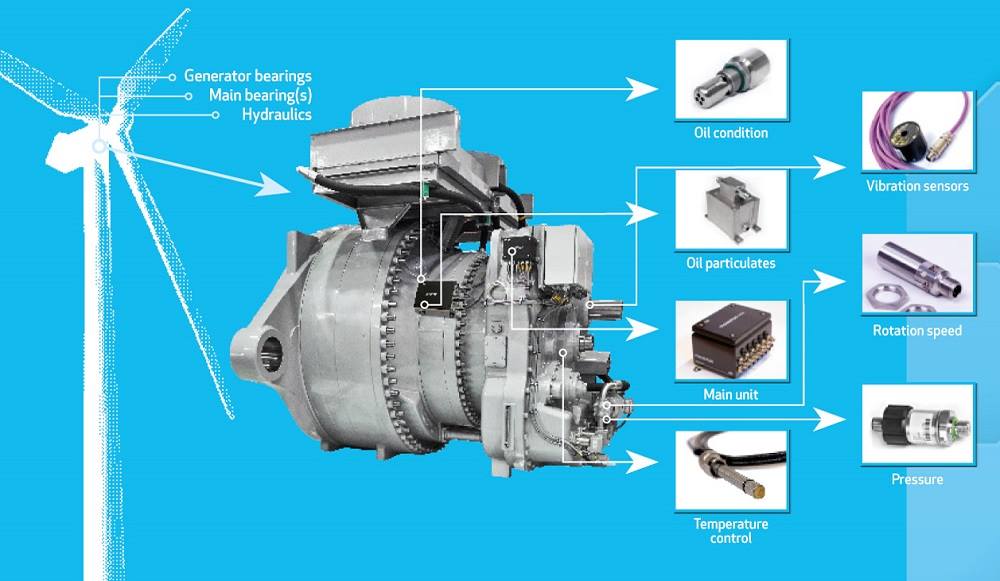The Benefits of Installing a Condition Monitoring System
 Every day of downtime at a wind turbine is lost revenue. Transitioning from unplanned to planned maintenance, or preventive versus reactive maintenance, can offer considerable savings to a wind farm owner and other customers. Condition monitoring services are designed to maximize gearbox life through early detection of mechanical problems. Through remote, real-time multi-sensor monitoring of gearbox vibration, oil condition and particle counts, potential problems which would otherwise be missed by a wind turbine SCADA system alone, can be detected, allowing required maintenance activities to be scheduled in advance and reducing costly downtime.
Every day of downtime at a wind turbine is lost revenue. Transitioning from unplanned to planned maintenance, or preventive versus reactive maintenance, can offer considerable savings to a wind farm owner and other customers. Condition monitoring services are designed to maximize gearbox life through early detection of mechanical problems. Through remote, real-time multi-sensor monitoring of gearbox vibration, oil condition and particle counts, potential problems which would otherwise be missed by a wind turbine SCADA system alone, can be detected, allowing required maintenance activities to be scheduled in advance and reducing costly downtime.
Condition monitoring services operate by having expert analysts and technicians keep watch around the clock, twenty-four hours a day, seven days a week, monitoring key variables reflecting drive-train health. Correlating real-time oil particle counting and real-time vibration analysis; two critical variables which speak volumes when their data is compared, backed by state-of-the-art software to interpret the sensor data can paint an important picture of what is happening in a gearbox.
Remote monitoring of the following variables can reflect drive-train health:
- Bearing and Oil Temperature
Provides advance warning of possible malfunctions in cooling systems as well as problems with turbine lubrication
- Vibration Analysis
Monitoring changes in vibrations provides early warning signs of bearing rolling element and race issues as well as gear wear and shaft misalignment issues
- Oil Condition and Particulates Content
Provides advanced warning of wear-related problems due to contaminated lubricant, which can greatly limit gearbox life

Costs savings of condition monitoring
If a gearbox runs to failure, costs can range anywhere from $300K to $450K to repair it. With a condition monitoring system, which can be retrofitted to existing equipment, technicians can arrive swiftly at a site and fix the turbine, often with just one day of downtime. Maintenance can be proactively planned even months in advance and shutdowns scheduled
for repairs limiting turbine downtime.
Condition monitoring systems can cost under $10K, and are available as easy-to-install smart, compact, value-added packages, custom tailored to monitor a range of performance parameters. Service agreements and zero down leasing options are now being offered by some companies to get systems up and running quickly and cost efficiently. Data is collected and sent to a remote server over the internet using standard TCP/IP protocol or 3G/4G wireless networks, and users can choose to analyze data on their own, or receive expert data analysis, and a detailed report with a recommended course of corrective action. Remote monitoring systems can be beneficial for one, or thousands of units spread out over a wide geographical area, increasing cost efficiency significantly when technicians are deployed to fix more than one turbine on a single trip with overhead amortized over more work. This would not be possible without condition based monitoring of the drivetrain.
Who benefits from a condition monitoring system?
For end-users, condition monitoring guarantees the continuity of their energy yield and lowers the cost of energy. For energy utilities, it transforms conventional maintenance into smart, proactive maintenance, and longer, more trouble-free operations. For turbine and system suppliers, a condition monitoring system can provide a new, value-added dimension to their product offering. A large number of different parameters from multiple measurable locations can be handled for industrial gear applications as well.
 Does remote monitoring provide an acceptable return on investment?
Does remote monitoring provide an acceptable return on investment?
The average gearbox failure rate over 10 years of operations is estimated at 5% according to a 2013 NREL report. The primary consideration to look at is the frequency and severity of failure. How often does the system fail and what is the cost impact of the failure? The underlying failure rate cannot be changed, but having a reliable condition monitoring system in place can reduce the cost impact per failure significantly, resulting in a slam dunk return on investment.
Monitoring systems can grow and change as needs change, and the data provided can prove helpful in designing a preventative maintenance program which minimizes problems and avoids catastrophic failures, ensuring a longer unit lifetime. Monitoring how the gearbox and other drivetrain components are performing 24/7 anticipates possible upcoming failures, providing timely updates and even alerting maintenance crews. With the early warning provided by a dependable condition monitoring system, what could have been weeks or months out of service for a turbine, instead becomes a manageable up-tower repair and one day of downtime, bringing peace of mind, as well as considerable cost savings to customers.
Ozgen Kilic is a CMaS Engineer for Moventas. Moventas Americas is a multi-brand wind drivetrain service company with over 35 years of wind turbine gearbox design, manufacturing, and service experience. Their comprehensive suite of wind drivetrain services covers over 85% of the installed wind fleet with shop repair, less expensive up-tower repair along with monitoring and inspection services to lower their customers’ cost of electricity. Moventas’ service and manufacturing facilities in North America are all located in the main wind energy corridors and offer fast and responsive services.
Moventas | www.moventas.com
Volume: January/February 2016









.jpg?r=7328)


